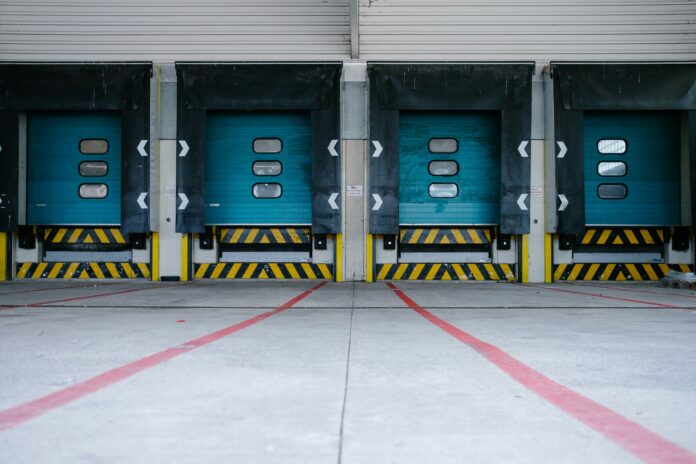The very concept of industrial facilities is synonymous with the notion of controlled environments. However, within this complex ecosystem, a singular yet powerful component stands out in its ubiquitous presence—industrial doors. Often understated, these entrances serve as essential transition points, safeguarding assets and personnel, maintaining regulated environments, and streamlining operational functionality. Today, we’re taking a deep dive into how these fixtures are redefining the landscape of access control and safety within the industrial sector.
When we think about industrial doors, we recognize that their primary role extends beyond mere passage points; they are pivotal components in the broader strategy of managing access and ensuring the safety of all who pass through them. Industrial door systems are heavily relied upon for their ability to facilitate the controlled entry and exit of personnel and valuable materials. What’s less known are the advancements in door technology and design that are significantly transforming operations within industrial settings, making them safer, more efficient, and adaptable to the evolving challenges of the industrial realm.
Here’s how industrial doors are becoming not just passive barriers, but active enforcers of access control and safety in the modern industrial environment.
Enhanced Access Control
In an age where security breaches are a significant concern, industrial doors have evolved to offer sophisticated entry management solutions that go beyond the conventional lock and key.
Automated Entry Systems
The implementation of automated entry systems has fostered a new era of efficiency in access management. These systems, often integrating advanced sensors and control mechanisms, allow for the seamless and secure regulation of entry points. Whether sliding, overhead, or revolving, these modern entrants use a combination of proximity sensors, biometric readers, and even AI to grant access to authorized personnel while deterring unauthorized entry.
Secure Access for Authorized Personnel
With the rise of sophisticated access control protocols, industrial doors serve as the first line of defense against unauthorized access. High-speed roll-up doors, for example, can be programmed to open rapidly for those with the correct credentials, effectively preventing tailgating and other security loopholes that could be exploited by intruders.
Integration with Access Control Technologies
Modern industrial doors are designed with the capacity to seamlessly integrate with complex access control systems. This integration allows for centralized management, where access can be granted or denied remotely and instantaneously, providing a level of discretion and precision that traditional locks cannot match.
Safety Features
Industrial settings present a myriad of risks, from in-house operations to external factors. Industrial doors with advanced safety features mitigate these risks, safeguarding the continuity of operations and, most importantly, the well-being of those within the facility.
Impact-Resistant Materials
Industrial doors are now constructed with materials that can withstand significant force, such as high-quality steel and aluminum. These impact-resistant structures protect facilities against inclement weather, industrial accidents, and unauthorized intrusion, reinforcing the safety and integrity of the industrial space. And, on the websites of industrial door suppliers, you can read more about how these doors are engineered to withstand even the most severe conditions. That way, you can be sure that your facility is well-protected.
Emergency Response Mechanisms
In the event of an emergency, swift and safe evacuation is paramount. Industrial doors now come equipped with emergency response mechanisms, including quick-release features, emergency opening systems, and alarmed exits, all of which are designed to provide a clear and safe path to egress during critical situations.
Compliance with Safety Regulations
Every industry must adhere to a set of safety standards and regulations. Industrial doors are now being manufactured and installed with these standards in mind, ensuring that the transportation of materials, as well as the movement of personnel, align with safety compliances.
Efficiency and Productivity
Operational efficiency is the hallmark of a successful industrial enterprise. Industrial doors play a crucial role in ensuring that the various components of a facility operate in harmony, with safe and efficient material and personnel flow.
Streamlined Workflow
By providing a customizable and responsive means of entry, industrial doors aid in the optimization of workflow paths within a facility. For example, high-speed doors with rapid opening and closing times facilitate continuous material flow and reduce the time taken for entry and exit procedures.
Minimized Downtime
The robust design and construction of modern industrial doors minimize the likelihood of breakdowns and malfunctions, thereby reducing downtime due to door-related issues. Additionally, proactive maintenance schedules ensure that these doors function at their peak efficiency, contributing to the overall operational continuity of the facility.
Improved Operational Efficiency
The incorporation of industrial doors into overall facility design is proving instrumental in enhancing operational efficiency. From temperature-controlled environments to managed wind-load specifications, doors are tailored to the unique needs of the industries they serve, thus promoting efficiency across the board.
The role of industrial doors in access control and safety cannot be overemphasized. They function as the harbingers of a secure and structured industrial ecosystem, a meticulously crafted interface between the chaos of the external world and the regulated precision of industrial processes. With an unwavering commitment to innovation, these portcullises of productivity continue to evolve and adapt, reinforcing their status not only as integral operations elements but as innovative guardians of the industrial realm’s most valuable resources—its people and its products.























